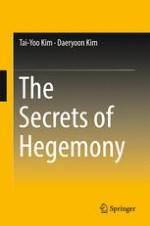2017 | OriginalPaper | Chapter
2. Spain: Agricultural Empire on the Waves
Authors : Tai-Yoo Kim, Daeryoon Kim
Published in: The Secrets of Hegemony
Publisher: Springer Singapore
Activate our intelligent search to find suitable subject content or patents.
Select sections of text to find matching patents with Artificial Intelligence. powered by
Select sections of text to find additional relevant content using AI-assisted search. powered by
